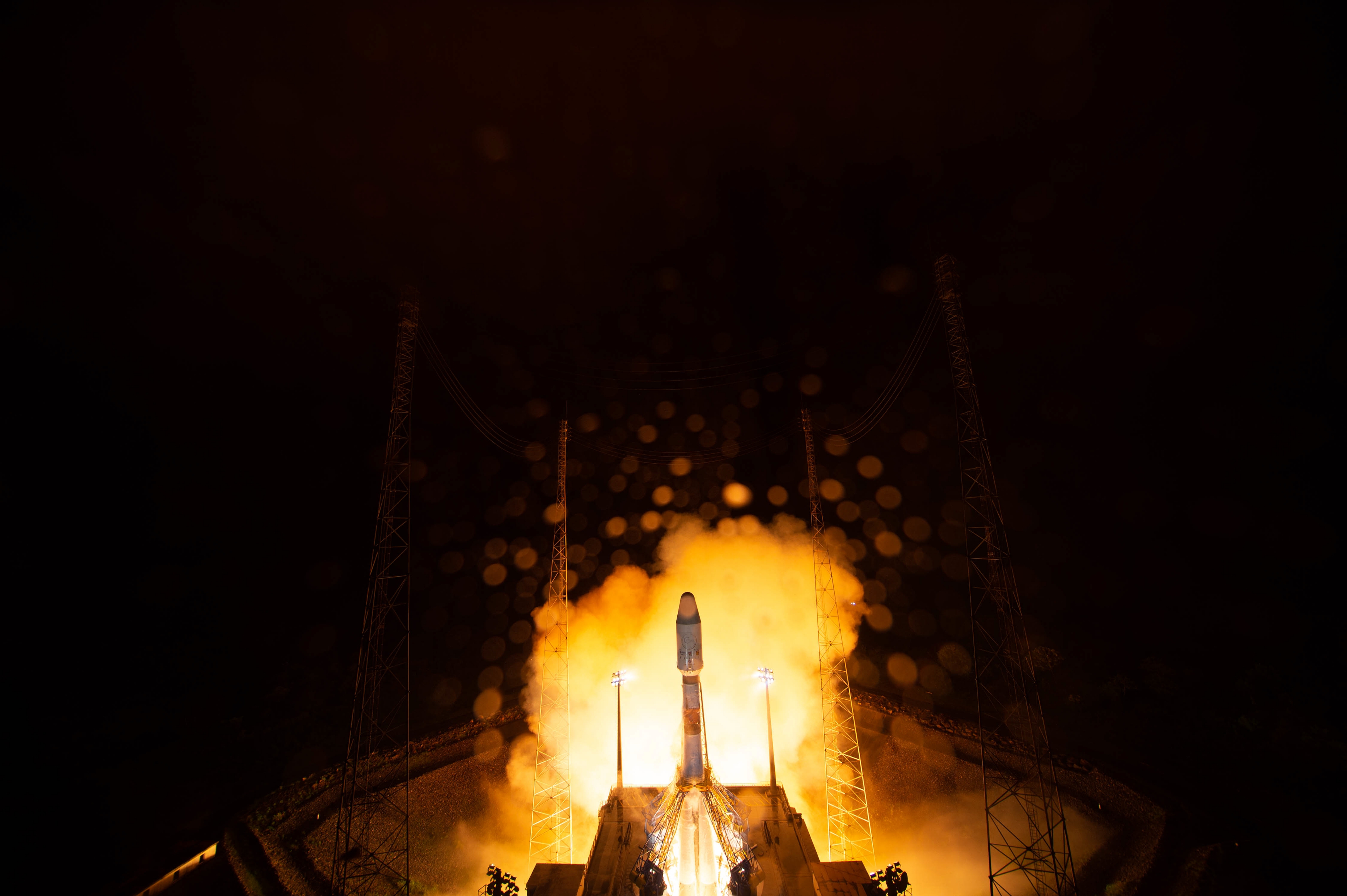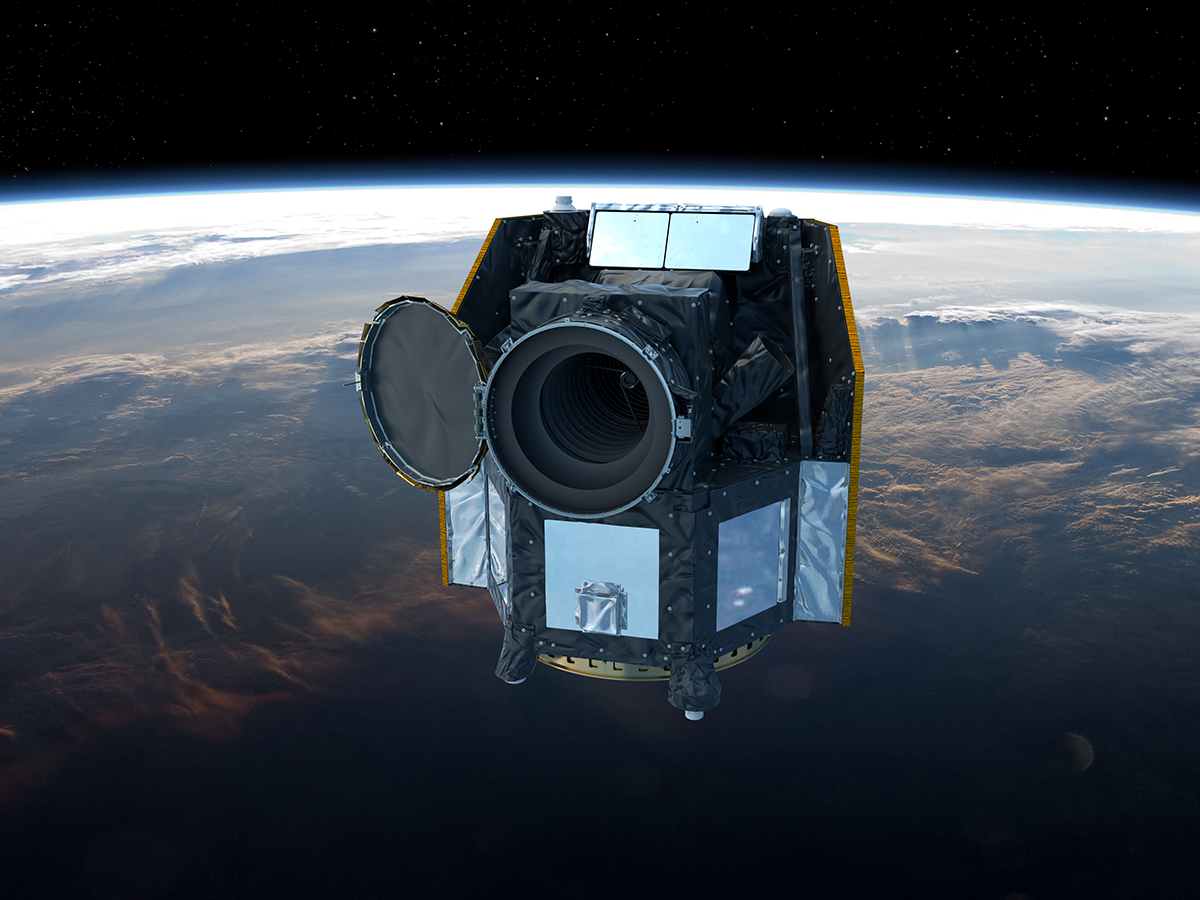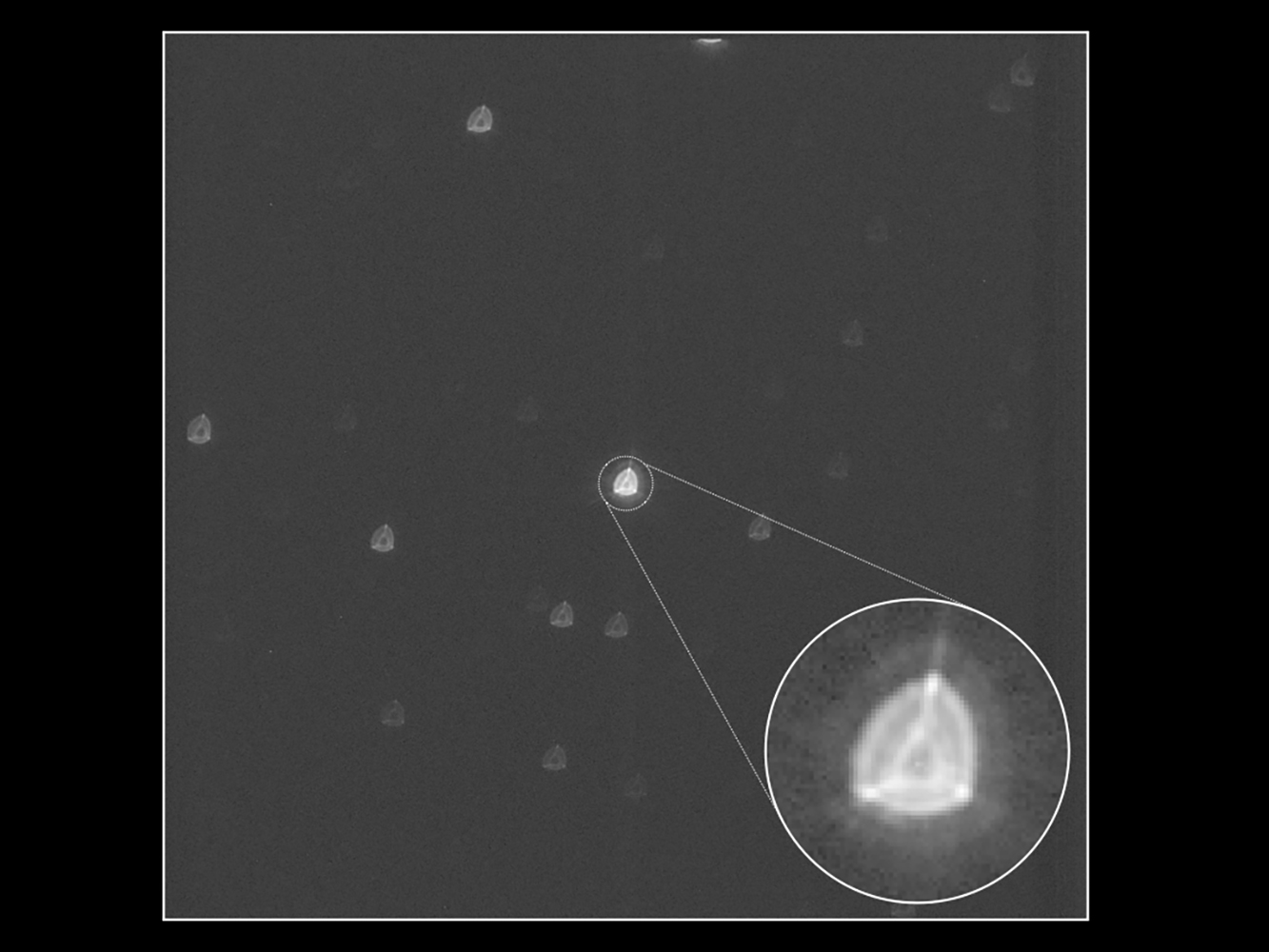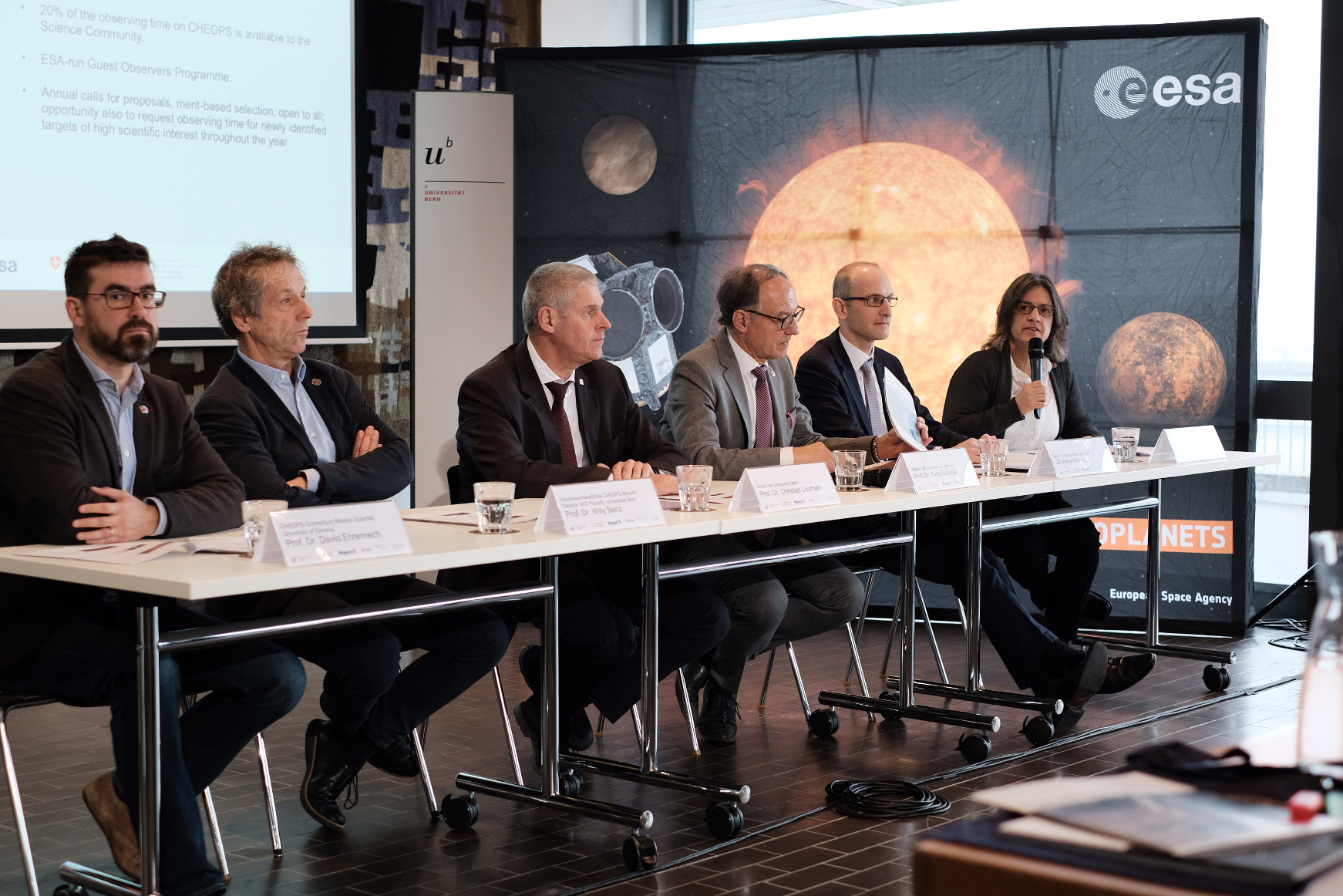One-year launch anniversary of CHEOPS
In its first year in orbit, the CHEOPS space telescope has already revealed details of one of the most extreme exoplanets and showed its maneuverability by evading space debris. CHEOPS is a joint mission by the European Space Agency (ESA) and Switzerland, under the aegis of the University of Bern in collaboration with the University of Geneva.
Since its launch last year from the European Space Agency (ESA)’s spaceport in Kourou, French Guiana, on December 18 the CHEOPS telescope in Earth’s orbit has demonstrated its functionality and precision beyond expectations. That it would ever to get to that point, was never a certainty, as it was a pioneering project in different aspects.
First Swiss-led ESA space mission
From 26 project proposals, CHEOPS was selected as ESA’s so-called first small ‘S-class mission’ back in 2012. The conditions of such a mission were that it had to be realized within a few years and would not cost ESA more than 50 million euro. It is the first Swiss-led mission of ESA, and as such, Switzerland was the primary financial contributor after ESA. Furthermore, CHEOPS is the first ESA mission dedicated to characterizing known exoplanets.
Exoplanets, i.e. planets outside the Solar system, were first found in 1995 by two Swiss astronomers, Michel Mayor and Didier Queloz from the University of Geneva, who were last year awarded the Nobel Prize for this discovery. Since then, over 4000 such planets were found, and CHEOPS was proposed to determine the composition of the most interesting specimens. This ambitious goal required a dedicated collaboration of a consortium of more than a hundred scientists and engineers from eleven European countries, who were involved in constructing CHEOPS under the leadership of the University of Bern and ESA over five years.
“We think that we meet the requirements to deliver ultra-precise measurements to the scientists. Otherwise we would not be flying", said Christopher Broeg, project manager for the CHEOPS mission from the University of Bern, upon completion of construction. And meet them, they did. In close collaboration with the University of Geneva, where the Science Operations Center of CHEOPS is located, the instrument has already collected plenty of data. Despite the extraordinary circumstances the Covid-19 pandemic has created, CHEOPS scientists have recently carried out a detailed study of an extreme exoplanet based on some of this data. “And the next papers are already in preparation”, as Willy Benz, Professor of astrophysics at the University of Bern and head of the CHEOPS consortium, reports.
In the beginning of October 2020, the CHEOPS space telescope had to make an evasive maneuver due to a piece of space debris. "In the event of a collision, this could have meant the destruction of the CHEOPS space telescope", as Willy Benz points out.
Strong collaboration between universities and industrial partners
“This mission really stands out in Swiss space activity”, as Renato Krpoun, head of the Swiss Space Office, puts it, “and reflects on the strong collaboration with industrial partners”. Christian Leumann, rector of the University of Bern, points out that the CHEOPS mission "underlines our presence in space research and gives Switzerland international visibility." Yves Flückiger, rector of the University of Geneva, adds: “I am more than content with the close collaboration between our universities as well as with the industrial partners.”
Exciting scientific year to come
The mission presents an excellent opportunity for scientists world-wide, explains Kate Isaak, ESA Project Scientist: “With twenty percent of the observing time available through the ESA-run Guest Observers Programme, scientists from around the world will be able to capitalize directly on the unique capabilities of CHEOPS.”
“Judging by the latest observation successes, 2021 will be a very exciting year for CHEOPS, scientifically speaking” as David Ehrenreich, Professor of Astronomy at the University of Geneva and Consortium Mission Scientist of CHEOPS, concludes.
CHEOPS – in search of potential habitable planetsThe CHEOPS mission (CHaracterising ExOPlanet Satellite) is the first of ESA’s newly created “S-class missions” – small-class missions with an ESA budget much smaller than that of large- and medium-size missions, and a shorter timespan from project inception to launch. CHEOPS is dedicated to characterizing the transits of exoplanets. It measures the changes in the brightness of a star when a planet passes in front of that star. This measured value allows the size of the planet to be derived, and for its density to be determined on the basis of existing data. This provides important information on these planets – for example, whether they are predominantly rocky, are composed of gases, or if they have deep oceans. This, in turn, is an important step in determining whether a planet has conditions that are hospitable to life. CHEOPS was developed as part of a partnership between the European Space Agency (ESA) and Switzerland. Under the leadership of the University of Bern and ESA, a consortium of more than a hundred scientists and engineers from eleven European states was involved in constructing the satellite over five years. CHEOPS began its journey into space on Wednesday, December 18, 2019 on board a Soyuz Fregat rocket from the European spaceport in Kourou, French Guiana. Since then, it has been orbiting the Earth on a polar orbit in roughly an hour and a half at an altitude of 700 kilometers following the terminator. The Swiss Confederation participates in the CHEOPS telescope within the PRODEX programme (PROgramme de Développement d'EXpériences scientifiques) of the European Space Agency ESA. Through this programme, national contributions for science missions can be developed and built by project teams from research and industry. This transfer of knowledge and technology between science and industry ultimately also gives Switzerland a structural competitive advantage as a business location – and enables technologies, processes and products to flow into other markets and thus generate added value for our economy. More information: https://cheops.unibe.ch |
Bernese space exploration: With the world’s elite since the first moon landingWhen the second man, "Buzz" Aldrin, stepped out of the lunar module on July 21, 1969, the first task he did was to set up the Bernese Solar Wind Composition experiment (SWC) also known as the “solar sail” by planting it in the ground of the moon, even before the American flag. This experiment, which was planned and the results analysed by Prof. Dr. Johannes Geiss and his team from the Physics Institute of the University of Bern, was the first great highlight in the history of Bernese space exploration Ever since Bernese space exploration has been among the world’s elite. The numbers are impressive: 25 times were instruments flown into the upper atmosphere and ionosphere using rockets (1967-1993), 9 times into the stratosphere with balloon flights (1991-2008), over 30 instruments were flown on space probes, and with CHEOPS the University of Bern shares responsibility with ESA for a whole mission. The successful work of the Department of Space Research and Planetary Sciences (WP) from the Physics Institute of the University of Bern was consolidated by the foundation of a university competence center, the Center for Space and Habitability (CSH). The Swiss National Fund also awarded the University of Bern the National Center of Competence in Research (NCCR) PlanetS, which it manages together with the University of Geneva. |
Exoplanet research in Geneva: 25 years of expertise awarded a Nobel PrizeCHEOPS will provide crucial information on the size, shape, formation and evolution of known exoplanets. The installation of the "Science Operation Center" of the CHEOPS mission in Geneva, under the supervision of two professors from the UniGE Astronomy Department, is a logical continuation of the history of research in the field of exoplanets, since it is here that the first was discovered in 1995 by Michel Mayor and Didier Queloz, winners of the 2019 Nobel Prize in Physics. This discovery has enabled the Astronomy Department of the University of Geneva to be at the forefront of research in the field, with the construction and installation of HARPS on the ESO's 3.6m telescope at La Silla in 2003, a spectrograph that remained the most efficient in the world for two decades to determine the mass of exoplanets. However, this year HARPS was surpassed by ESPRESSO, another spectrograph built in Geneva and installed on the VLT in Paranal. CHEOPS is therefore the result of two national expertises, on the one hand the space know-how of the University of Bern with the collaboration of its Geneva counterpart and on the other hand the ground experience of the University of Geneva supported by its colleague in the Swiss capital. Two scientific and technical competences that have also made it possible to create the National Center of Competence in Research (NCCR) PlanetS. |
2020/12/17






